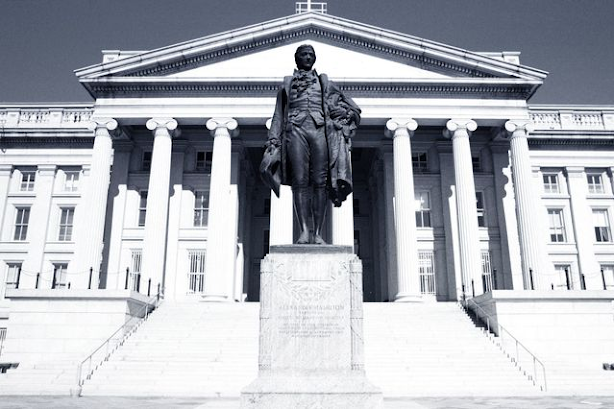Treasuries Are Getting Crushed. It Might Continue for a Long Time.
By Jacob Sonenshine
The price of Treasury bonds has plummeted recently.
That could be just the start of a painful road ahead for bond investors.
The price of bonds decline as bond yields rise—and that is exactly what has happened of late.
The 10-year Treasury yield is up to 2.4% from a pandemic-era low of just over 0.5% hit in the summer of 2020.
The 30-year Treasury yield is up to 2.5% from a 1.18% low in April 2020.
Driving much of that has been inflation and Federal Reserve policy.
Gains in the consumer-price index recently hit a 40-year high and are expected to settle at just under 3% a year on average for the next 10 years, according to St. Louis Fed data.
The Fed is expected to lift short-term interest rates many times within the next couple of years, while reducing its bond holdings.
It has already stopped its program of long-dated bond purchases, which once totaled $80 billion a month.
Less money moving into the bond market lowers bond prices.
The selling in bonds could keep going for a long time.
First off, a multidecade bull market in Treasury bonds looks to have ended.
During that run, an average yield of long-dated Treasury bonds—those going out 10 years and longer—fell from 14% in 1981 to 1% in 2020, according to Bank of America data.
That came as high inflation and interest rates in the 1980s gave way to a long era of declining inflation and rates.
That recent 1% average yield looks like a bottom, as it’s now closer to 2%—a doubling.
Strategists at Bank of America wrote that they see the yield moving up to 4% by 2024.
That call has plenty of fundamental support.
Inflation could remain higher than expected.
Even without accounting for this year’s rise in oil prices, which are often highly volatile, inflation beat estimates in February.
The core CPI, which doesn’t account for energy and food prices, rose 6.4% year-over-year in February, versus expectations of 5.9%.
That indicates that prices across the board are up—and they’re staying up.
The Fed has also made clear that it’s committed to raising rates.
To be sure, that is meant to bring inflation down.
But at least for a year or two, 10- and 30-year Treasury yields have room to move higher.
Their real yields are negative, meaning that they’re below expected annual inflation—and investors normally demand a higher annual rate of return than the inflation rate.

0 comments:
Publicar un comentario